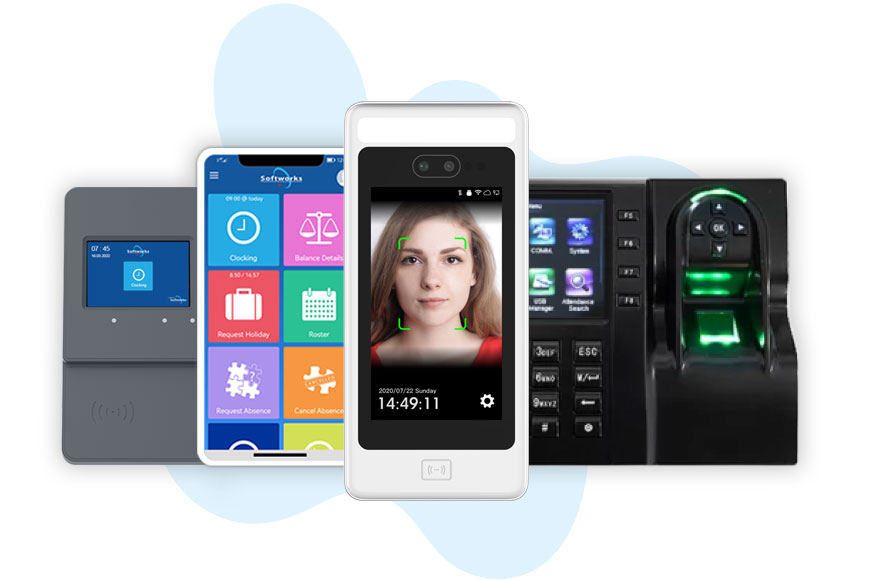In today’s digital world, businesses rely on modern time clock systems to track employee work hours, streamline payroll, and enhance overall workforce efficiency. However, with this convenience comes a significant responsibility—keeping employee data secure. Time tracking software stores sensitive details such as employee names, work schedules, payroll data, and even biometric information. Without proper security measures, this data could be vulnerable to cyber threats, unauthorized access, or even accidental leaks. That’s why businesses must prioritize Secure Time Systems to safeguard employee information while maintaining seamless time tracking operations.
Why Security Matters in Time Clock Systems
Employee data security is not just about compliance with regulations; it’s about protecting your workforce from potential fraud, identity theft, and privacy violations. Cybercriminals target businesses of all sizes, and unprotected time tracking systems can be a goldmine for hackers. Additionally, internal breaches due to poor security practices can lead to severe consequences, including legal liabilities and reputational damage.
A secure time system ensures:
Confidentiality: Only authorized personnel have access to sensitive data.
Integrity: Data remains accurate and unaltered.
Availability: Employees and managers can access necessary information without security risks.
Let’s explore some of the best practices for keeping employee data secure in modern time clock systems.
Best Practices for Securing Employee Data in Time Tracking Systems
1. Use Encryption for Data Protection
One of the most effective ways to secure employee data is through encryption. Encryption converts sensitive data into a coded format, making it unreadable to unauthorized users. Ensure that both stored and transmitted data are encrypted using industry-standard methods such as AES-256.
2. Implement Multi-Factor Authentication (MFA)
Strong authentication measures prevent unauthorized access to time tracking systems. Multi-factor authentication (MFA) adds an extra layer of security by requiring users to verify their identity through multiple methods—such as passwords, fingerprints, or one-time codes sent to their phones.
3. Regularly Update Software and Security Patches
Outdated software can create vulnerabilities in time tracking systems. Cybercriminals often exploit these weaknesses to gain unauthorized access. Ensure that your time clock system is always updated with the latest security patches to protect against evolving threats.
4. Restrict Access with Role-Based Permissions
Not all employees need access to all data. Implement role-based access controls (RBAC) to ensure that only authorized personnel can view or modify sensitive information. For example:
HR personnel should have access to payroll data.
Employees should only see their own attendance records.
IT administrators should have control over system configurations.
5. Use Secure Cloud-Based Time Clock Systems
Cloud-based time tracking systems offer enhanced security measures such as automatic backups, encryption, and secure login protocols. However, choosing a reputable provider that follows stringent security practices is crucial. Look for vendors that comply with industry standards such as GDPR, HIPAA, or SOC 2.
6. Conduct Regular Security Audits
Routine security audits help identify vulnerabilities in your time clock system. Perform regular assessments of your security measures, review access logs, and check for suspicious activities. Conduct penetration testing to simulate cyber-attacks and strengthen weak areas.
7. Educate Employees on Cybersecurity Best Practices
Human error is one of the leading causes of security breaches. Train employees on cybersecurity best practices, such as:
Recognizing phishing attempts.
Creating strong passwords.
Avoiding public Wi-Fi when accessing work-related data.
8. Secure Biometric Data with Advanced Protection
If your time clock system uses biometrics (fingerprint, facial recognition, etc.), ensure that this data is stored securely. Avoid saving raw biometric images; instead, use encrypted templates that cannot be reverse-engineered.
9. Monitor and Log Access to Time Tracking Systems
Keeping an activity log allows businesses to track who accessed what data and when. This helps in identifying any suspicious behavior or potential security threats before they escalate.
10. Have a Data Breach Response Plan
Despite having strong security measures, businesses should always be prepared for potential breaches. Establish a response plan that includes:
Immediate investigation of security incidents.
Notifying affected employees and stakeholders.
Implementing corrective measures to prevent future breaches.
FAQs About Secure Time Systems
1. What is a Secure Time System?
A secure time system is a time tracking solution that uses advanced security measures such as encryption, MFA, and access controls to protect employee data from unauthorized access or cyber threats.
2. How do biometric time clocks ensure security?
Biometric time clocks use encrypted templates instead of storing raw fingerprint or facial data. This ensures that even if data is compromised, it cannot be misused or reconstructed.
3. Are cloud-based time tracking systems safe?
Yes, cloud-based systems can be highly secure if they use robust encryption, access controls, and regular security updates. It’s essential to choose a reputable provider that follows industry security standards.
4. How often should I update my time tracking system?
It’s best to update software as soon as new security patches or updates are released. Regular updates help fix vulnerabilities and improve overall security.
5. What should I do if my time tracking system experiences a data breach?
If a data breach occurs, take immediate action by investigating the breach, informing affected employees, and strengthening security measures to prevent future incidents.
Conclusion
Protecting employee data in modern time clock systems is a critical responsibility for businesses. Implementing strong security measures such as encryption, MFA, access controls, and regular updates ensures that sensitive information remains protected from cyber threats and unauthorized access. Additionally, educating employees about cybersecurity best practices and conducting regular security audits can further strengthen your company’s defenses.
By investing in Secure Time Systems, businesses can not only ensure compliance with data protection regulations but also foster trust and reliability within their workforce. In a world where data breaches are becoming increasingly common, prioritizing security in time tracking systems is no longer optional—it’s essential.

